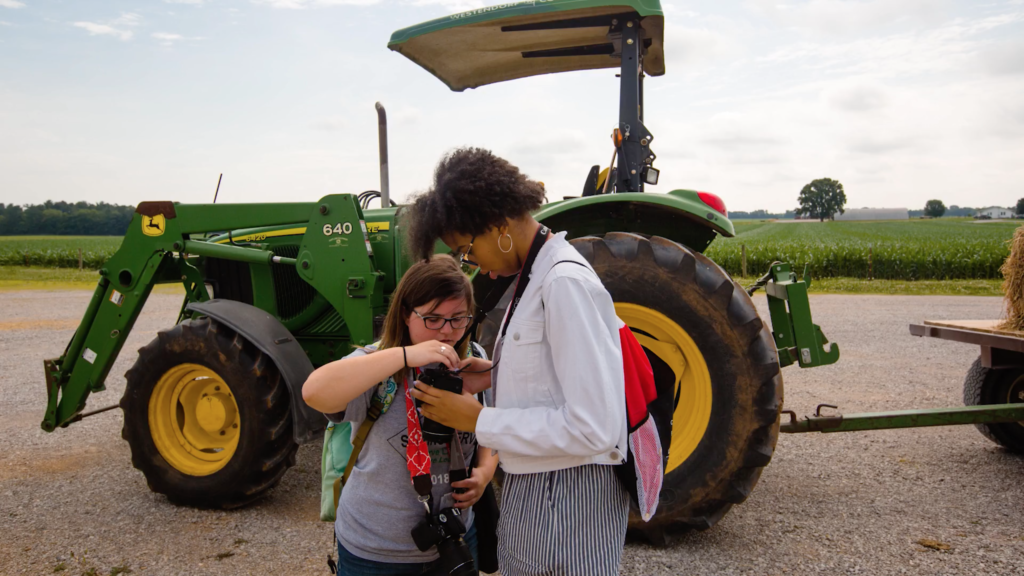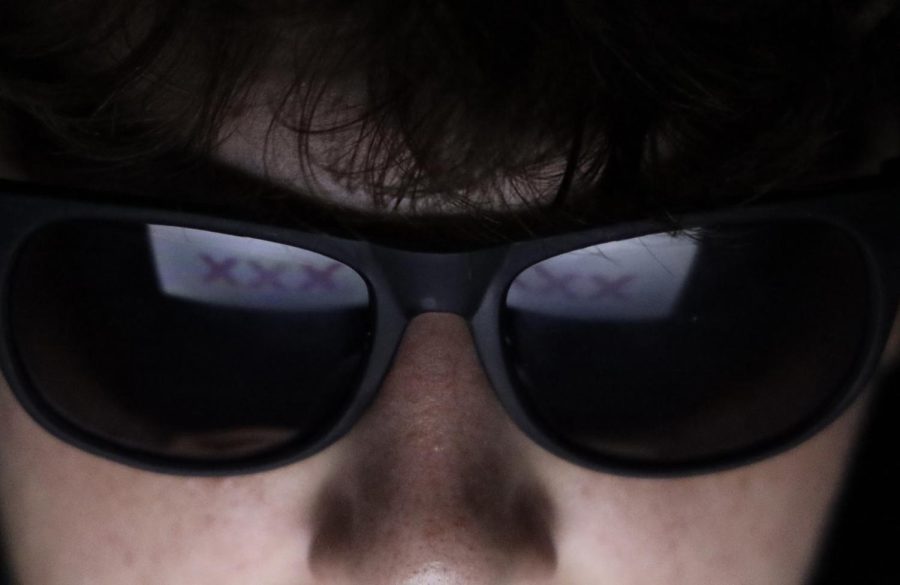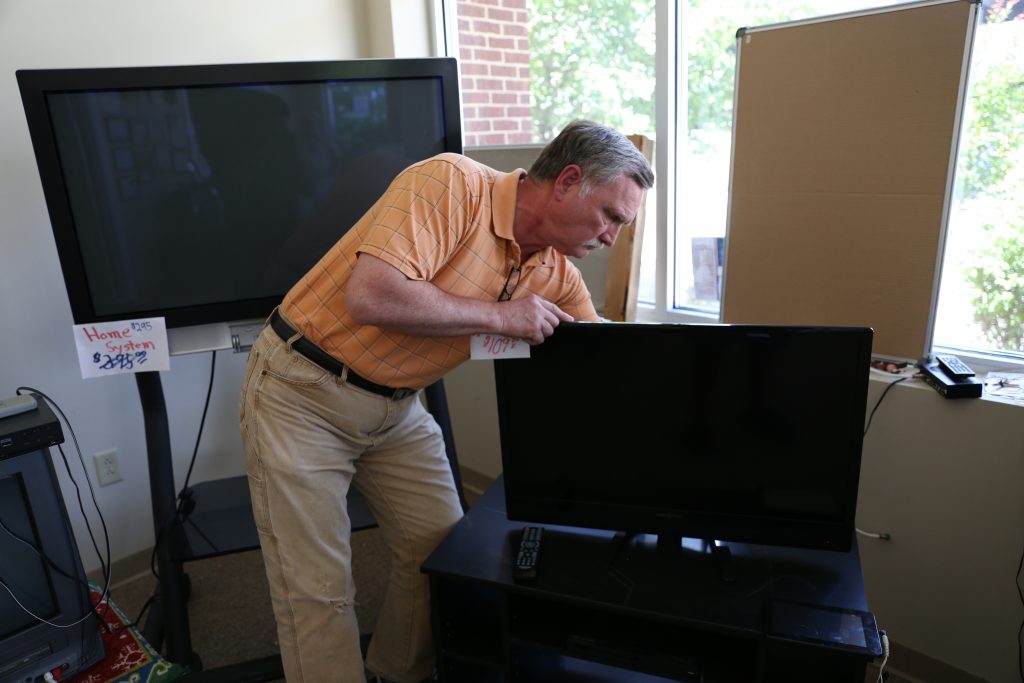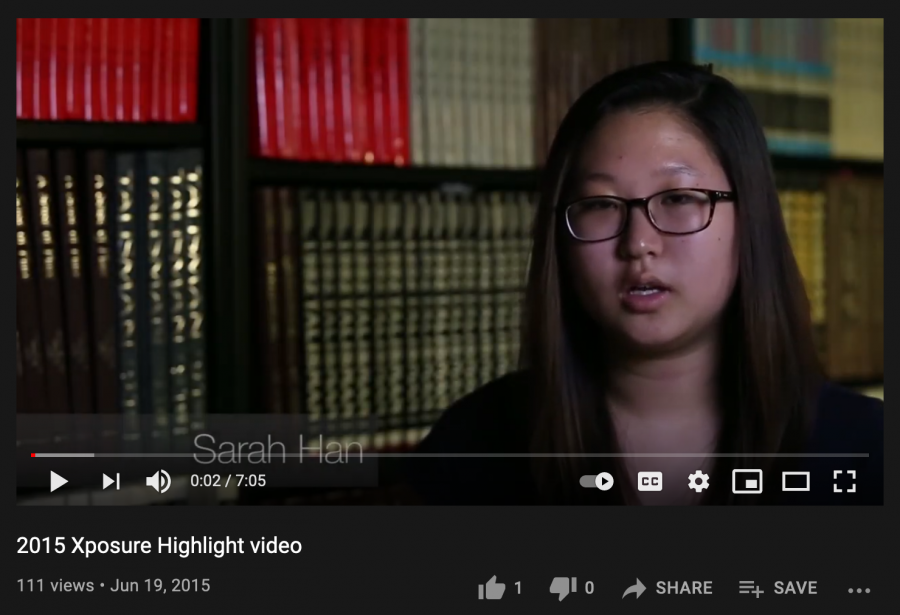E-cigs spark problems for teens

Photo illustration by Ronald Wagner / Crossroads Preparatory School
By CHUCK LOGSDON
Henry Clay High School
By MAKAIO SMITH
Atherton High School
Thomas, a recent high school graduate from St. Louis, is a habitual vaper. Like most teens, he took his first puff on an e-cigarette at the urging of a vaping friend.
[She] “asked if I wanted to hit it,” Thomas said. “I hit it and I got really buzzed.”
Thomas’ next step into the world of vaping was purchasing his own, which he bought from that same friend. His preferred brand is the Juul, the most popular e-cigarette among teens. Juul dominates the vape market, accounting for 75% of the market share, according to the Nielsen company.
(Limited Edition, a product of Western Kentucky University’s Xposure Journalism Workshop for high school students around the country, is using only the young people’s first names to protect their privacy.)
Juuls have a sleek USB-like design that makes them easy to conceal and use in places where they are not typically allowed, such as schools. Other popular vape brands include Phix, Smok and Boulder.
Juuls, like many other e-cigarettes, are often seen by smokers as a safer alternative to cigarettes. What smokers, especially teen smokers, are less likely to know is that the Juul company is financially linked to the nation’s leading cigarette manufacturer, Altria. Altria owns many of the top cigarette brands, including Marlboro, and the top chewing tobacco companies, Copenhagen. Altria owns 35% of Juul after investing $12.8 billion in the company.
Atria and the companies it owns are considered a part of “Big Tobacco,” which is the term used to refer to the top producing tobacco companies. Big Tobacco has been accused of intentionally making their products more addictive, and marketing to more vulnerable consumers such as teenagers and lower-income, less-educated adults.
Although laws differ state to state, most restrict vape purchases to those 18 years old and up. In Kentucky, the legal age to purchase e-cigarettes is 18.
Like cigarettes, Juuls are sold in gas stations. Traditional vapes are only sold in licensed vape stores. Josh Polson, who works in a vape store in Bowling Green, said this is a large part of the problem with underage vaping. (Limited Edition is not identifying the store since Polson is not authorized to speak on behalf of the company.)
“The biggest problem comes down to Juuls not being sold in actual brick and mortar vape stores,” Polson said. “You have so many gas stations that don’t ID and don’t check and also don’t care where the products are going.”
Many brick and mortar vape stores including the one where Polson works have more strict procedures for preventing vapes from getting into the hands of minors. Apart from checking ID, stores have other methods for keeping their products away from teens.
“We can tell [if an adult is purchasing a vape for a minor] by the way they walk in. They’re unsure of what they’re getting, they’re checking their phone a lot, they come in with a list, Polson said. “We take as many precautions as we can to try to prevent it from going to someone underage.”
With vapes and cigarettes both being vehicles for delivering nicotine, the biggest topic of discussion is usually comparing the two.
Vanderbilt University Medical Center nurse practitioner and certified tobacco treatment specialist Julia Steed has expertise in both cigarettes and vapes. She sees underage use of both being problematic but sees different problems arising in teen use.
“The biggest difference between the two is that, if you can keep someone away from nicotine until their mid to late 20s, then they will tend to avoid it for life,” Steed said.
“So with e-cigarettes it’s easier to get away with it at a younger age than even 17 or 18… although the harm is less [with e-cigs] younger people are putting themselves at risk by using those e-cigarettes.”
The increase in teen vaping is commonly attributed to the trendy nature of the vapes or the sleek design of the Juul. However, this is not always the case. Unlike Thomas, some teens are often drawn to vapes due to serious underlying issues.
“I was struggling with some really terrible anxiety, panic attacks, just anxiety altogether, said 18-year-old Jake Anderson of Evansville, who started vaping without smoking cigarettes first.
“I went to the doctor and I got prescribed anxiety medication for it and it didn’t help,” he said. “I decided to just try whatever I could…so I ended up getting [a vape] with the lowest amount of nicotine juice and it helped me and it still helps me a lot.”
Thomas, who started vaping for fun, said the habit has helped him with his attention-deficit hyperactivity disorder.
“I have ADHD so I’m always doing something,” he said, “and it’s given me a really good way to calm the nerves and sort of calm me down.”
Despite the calming effects, Steed said, vaping can lead to a plethora of lung diseases that restrict airflow, mouth and throat irritation, cardiovascular issues such as raised blood pressure and increased heartbeat. The nicotine in e-cigs can also cause anxiety.
That being said, vaping does help many people quit cigarettes. A study conducted by Harvard Medical School found that vaping is 8% more effective than nicotine replacement therapy such as nicotine patches or nicotine gum. However, vaping is not helpful in quitting nicotine as 80% of those who quit with vapes continued to vape after the study. Only 9% of those in the nicotine-replacement group continued to use their nicotine products.
“[Vapes] can be an alternative to help people stop smoking,” Steed said. “It can be a benefit. It’s one of our harm reduction techniques when we’re counseling people to stop smoking cigarettes. It is less harmful than cigarettes.”
David Morgan, manager of D&J Vapor in Bowling Green, used e-cigarettes to quit smoking cigarettes. He attributed vaping to becoming healthier.
“I’ve smoked for 15 years, I’ve been off cigarettes for almost four,” Morgan said. “I feel 10 times better than I did when I smoked.”
Jake Finer, a St. Louis high school graduate, does not vape. Although many of his underage friends do, he tried it but decided it was not for him.
“I don’t like the way nicotine makes me feel,” Finer said. “It makes me feel nauseous, it gives me a headache and it increases my anxiety.”
Finer does not approve of his friends’ vaping habits and feels they do not fully understand what they are doing to their bodies.
“I think [my friends] are naïve,” Finer said. “I feel like [vape companies] are taking advantage of the lack of knowledge and are providing false advertising.”
This is the reality for many teens. Awareness is low, and sales are high. Finer said he doesn’t see any significant health problems or mental problems among his friends that vape but the dependence on nicotine vaping develops.
“I see a lot of withdrawals if they don’t have their nicotine,” Finer said. “I see a lot of my friends becoming agitated, becoming nervous and super tense if they don’t have their nicotine.”
Ron Wagner of St. Louis, Noah Grebe of Louisville and Abby Adams-Smith of Bowling Green contributed to this report.































